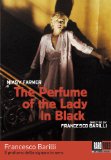Three years after her unsettling turn in Dario Argento’s Four Flies on Grey Velvet (1971), Mimsy Farmer headlined this giallo-related effort by director/co-writer Francesco Barilli. She plays a successful chemist on the verge of a psychotic break. She has been haunted since her childhood by the death of her father, and she has recurring memories (or are they fantasies?) of her mother in the arms of a sinister man. Her sense of reality crumbles as objects and people from her past appear and vanish. She retreats deeper and deeper into a paranoid shell. But just because you’re paranoid doesn’t mean they aren’t out to get you, and there are signs that she may be the victim of a sinister conspiracy.
By the time Barilli’s film reaches its admittedly chilling finale, it has ceased to make a lick of sense. This isn’t necessarily a bad thing: many gialli (and related Italian horror films) follow a logic that belongs to dreams rather than the real world. But even as Barilli adopts a stately pace (all of the violence in the film is reserved for the last fifteen minutes), he also tries to do too much, as if he were trying to fuse Repulsion with The Wicker Man. The film’s head-scratching aspects get in the way of the fist-in-the-gut denouement, or at least prevent it from having quite the impact it deserves. However, the film is handsomely shot, and the ending is sufficiently powerful that it will linger in the mind.
Video
Other than noticeable pixelation during a brief, red-lit scene early in the film, the picture is as close to perfect as one could hope for with a 1974 film. There is effectively no grain, and the print is in superb condition. The colours may more natural and not be quite as surreally eye-popping as in some of Argento’s work, but they are very strong all the same. The aspect ratio is the original1.85:1 anamorphic widescreen.
Audio
Both Italian and English dubs are available, with the former by far the more natural sounding (and looking, for that matter, matching the lip movements far more closely than the English track, and that includes the American-born Farmer, who does seem to be speaking Italian here). Both tracks are 2.0 mono, and the score sounds good within the constraints of that form.
Special Features
“Portrait in Black”: (26:08) An informative look back in the company of Barilli, who has excellent recall of not just how he made the film, but what he was hoping to achieve, too.
Director’s Biography.
Director’s Filmography. Both these text features are also featured in the liner notes.
“The Perfume of the Lady in Black Within the Context of 1960’s Horror.” A brief essay in the liner notes.
Final Thoughts
Certainly worth seeing for Euro-horror fans, one that has a hell of a payoff, even if it route there is a bit uneven.





